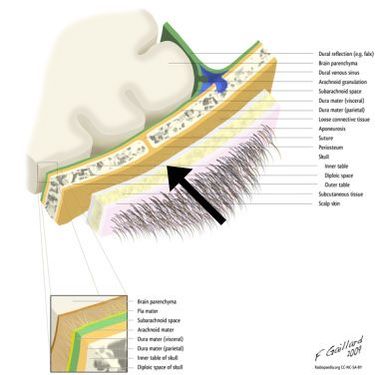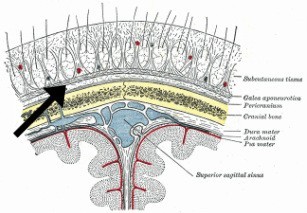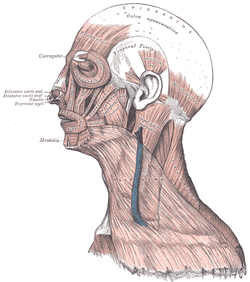HEADACHE OR SKULL PAIN…
IS THERE REALLY A DIFFERENCE?
Since I can remember, I would infrequently get these sensations in my head, painful, and the only way I can describe it is like a blood vessel has stretched and broken and hot liquid has poured out of the vessel. It would happen upon some kind of exertion. Now it happens more frequently and not necessarily with exertion. There is also pain on my scalp but seems like its under the scalp on top of the skull, and the pain is worse with pressure and seems tender. – Paula from MedHelp
I have a pain on my skull or scalp, which is slightly worse if pressure is applied. It is the same sensation that I used to get as a child when I had my hair pulled back into a pony tail, but I haven’t worn my hair like that for about 15 years now. It’s a patch on the top right of my skull/scalp. Does anyone have any idea what this is? – Franniesh from Wellshpere
Headaches
Anyone who has struggled through life trying to cope with CHRONIC HEADACHES knows how debilitating they can be. But what if for some of you your headaches were not really headaches at all? What if your pain were the result of issues with your skull — or to put it more precisely, issues with the tissues that cover the skull? For some of you this is undoubtedly where your pain is coming from and why no one has been able to figure it out thus far. Much of this starts with a tissue called Fascia.
FASCIA is the thin, cellophane-like membrane that surrounds all muscles, nerves, blood vessels, and bones (it goes by different names depending on the tissue it surrounds). Part of what makes Fascia so unique is that it is not only the most abundant CONNECTIVE TISSUE in the body, it is arguably the single most pain-sensitive tissue in the body as well. Just like other soft tissues, Fascia has the potential to be injured and form MICROSCOPIC SCAR TISSUE. Add to this the fact that Fascia is so thin that it cannot be properly imaged with even the most technologically advanced imaging techniques (CT / MRI), and you can see the potential of being swept away by CHRONIC PAIN’S PERFECT STORM.
CUT-AWAY IMAGES OF THE HAIRLINE ON TOP OF THE SKULL


The arrows in the images are pointing to the Galea Aponeurotica, which is also known as the Epicranial Aponeurosis (the thin layer of Fascia that surrounds the skull). This is extremely pain-sensitive tissue and can become “TETHERED” when injured.
If you look at a picture of the skull (below or at the top right of the page), you should begin to notice just how much Fascia there really is on the skull (click on the image to see what I’m talking about — the white is all Fascia). Sometimes you’ll see this Fascia on the top of the skull referred to as an Aponeurosis, which is technically a flattened out TENDON. The name for this particular APONEUROSIS / APONEUROTICA is either “Epicranial” or “Galea“, depending on whose anatomy atlas you are reading. Let me tell you about the relationship between the Epicranial Aponeurosis and Skull Pain in one such individual, as well as a couple of the crazy places it has taken him.
“Joe” (name changed to protect the innocent) emailed me a couple of months ago after reading the SKULL PAIN PAGE on our ‘Destroy Chronic Pain’ website. Like most of the people we see with ‘Skull Pain,’ Joe’s description of his pain was somewhat odd. In fact, I included the descriptions of ‘Skull Pain’ at the top of the page not only to show you this phenomenon, but also to show you that the best I could find as far as an online description of this problem was people looking for answers on various “someone-please-help-me-diagnose-my-problem” websites. Joe had been through much of the same junk that lots of patients I see had been through.
While in his early teen years, he developed “Skull Pain” a few months after a fairly serious injury to his face (a broken zygomatic arch) and subsequent surgery. Over the course of 5 years, Joe had been to all sorts of doctors (many psychiatrists and neurologists), a plethora of tests, and taken a large array of drugs — many being “psych” drugs and meds from THE BIG FIVE. He even ended up working on a farm for 6 months as part of a program developed to help people thought to be dealing with Psycho-Somatic illnesses (i.e. — problems that the experts believe are all in their head). Finally, another neurologist ran a SPECT SCAN and told the family that Joe had no signs of mental illness or organic disease process in his brain — something he had been trying to convince them of for years.
I told Joe that while ONE TREATMENT would probably not be enough to completely solve his problem, he would know whether or not our approach would help him. He had Fascial Adhesions all over his head, neck, and face that were so bad, you could hear them ‘CREAKING‘ as he moved. I broke the adhesions (different than craniosacral techniques), and the difference was immediate and significant (I will warn you that he looked like he had been at least a couple rounds with Mike Tyson — HERE). I received this email a few days later.
Dr. Schierling, I can’t tell you how much I appreciate your help with this. For all the things I’ve tried over the past 5 years, this is the only thing that has helped — so it gives me a hope that I did not have before. I do feel different after the work you did. I can’t say it is 100% gone, but the fact that it is improved is all I’ve been looking for. Thank you again and I will let you know how things go. Joe
A few days later I got this message from Joe’s mom (Joe, a college student living at home, had not told his folks he was flying out to see me — something I was unaware of as well).
“Dear Dr. Schierling, I wanted to thank you for helping my son ‘Joe’. In the past few years Joe had seen numerous doctors, had several brain scans and was given all types of medications. We spent thousands and thousands of dollars, all this to try to find some relief, yet nothing seemed to help him. He planned his trip without me knowing, and called me after he returned to tell me all about it. He spoke so highly of you. He said you were the only doctor that really understood him. He found relief with your treatment. Thank you for giving him hope and for being so kind. I hope he will be able to visit you again soon. With warm regards, Joe’s Mom.”
I can’t remember if I saw Joe one more time or two, but regardless, as I was working early as is my habit (I’m usually writing / studying by 4:00 am, before starting with patients at 8:30); as the sun started coming up I noticed a car in the parking lot, with someone asleep behind the wheel.

